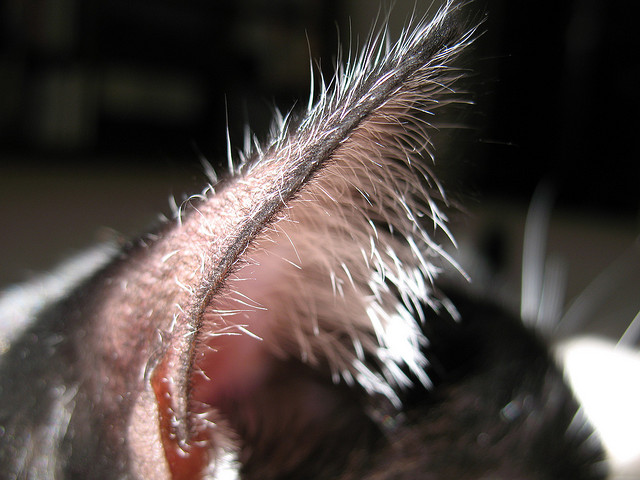Basic Things to Know About Cat Ear Mites

Image credit: Flickr cc
Ear mites are pesky little buggers that live inside the ear canals of both cats and dogs. Usually, infestation of pets takes place from other animals. So, if you have a cat that goes strolling in the garden and that has made a habit out of planning dates with the cat’s neighbor, beware. Not all pets are treated the same way.
After your cat’s been infested, the first thing you should do is take it to the vet. But hold on, how do you notice that it has ear mites? The symptoms are quite simple to discover. Traditionally, in the beginning of the condition, your cat shouldn’t manifest any itching in the ear area. It’s only after the mites have produced some lesions therefore allowing bacteria to spread and create an infection that your cat actually starts scratching the inside of the ears. If we’re talking about cat mites, the insides of the ears should be dark brown or black, and the color is quite typical for a parasitic ear infection. Consistent scratching can create rashes, blisters or any other skin problems in the area that has already been infested by mites. At times, the inside of the ear will have a fowl smell, alerting the cat owner that there is a local issue to be solved.
Taking the cat to the vet will establish a solid diagnosis. The vet usually takes a small portion of secretion from your cat’s ears and examines it under a magnifying lens or a microscope. When put in contrast with a black or dark surface, the ear mites will look like tiny white insects.
Ear mites can also spread on the rest of a cat’s skin. Moreover, if you own more than one cat, it’s a given statement that you should treat them both. Don’t be concerned about your or your children’s safety, though – the lucky thing is that cat ear mites do not spread in humans, so they are not a zoonosis. Fortunately, you don’t also have to treat yourself while you’re treating your cat.
The vet will most probably subscribe an ear solution that you should apply 1 to 2 times per day, every day for a period of time of up to one week. Don’t be scared. All you have to do is check your pet cat as often as possible. Obviously, it is recommended you also wash the entire body of the cat, to make sure there aren’t any mites or any mites’ eggs you’re missing.
In most of the cases, the local treatment works in cats. Just remember, you should frequently check for symptoms especially in the case of any behavioral changes of your cat.









